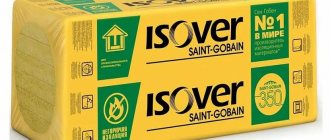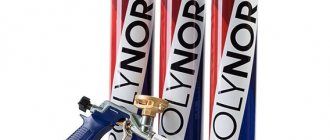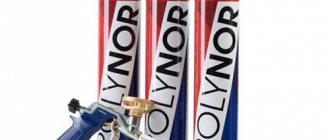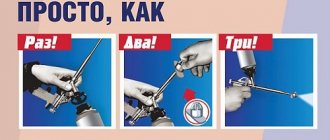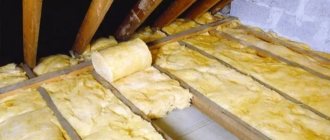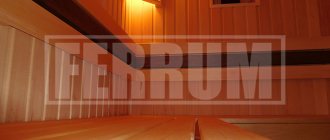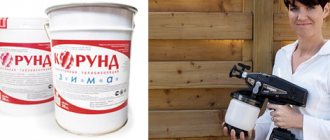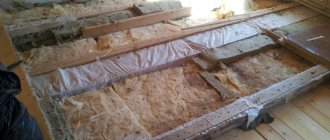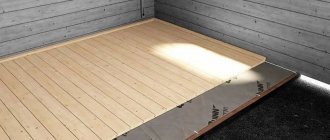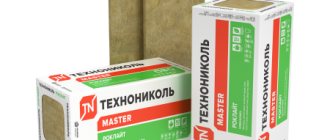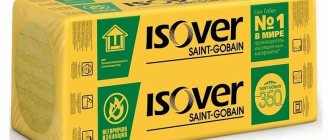Scope of application
The description of the insulation presents us with a modern, almost universal material, which has a fairly wide application as a finishing and insulating material, in particular:
- for facades for finishing;
- for foundations and attics;
- for balconies;
- for insulation of internal walls of a building, partitions in various buildings;
- to isolate communication systems;
- in vehicles with isothermal functions.
As you can see, the application is wide. And this is understandable, since the heat insulator has good performance properties, fits perfectly on any surface, is very flexible and is not subject to destruction, even if a crack appears on the surface. The material is non-toxic and perfectly absorbs sound and vibration waves.
Types of insulation for spraying
This is a universal material. It has two completely different types:
- Lightweight (open - cellular structure). Reminds me of cotton wool. It produces foam rubber. Has excellent elasticity. Soft. During operation, there is less material consumption than with rigid material. Provides better sound insulation compared to its rigid form, but the ability to absorb liquid is higher. Therefore it is suitable for internal insulation. Used in the creation of decorative elements. Its use requires adequate ventilation. Density 8–20 kg/m3.
- Hard (closed - cellular structure). Sufficiently dense material - from 25–300 kg/m3. Similar to foam. The price is higher than the light type. Suitable for outdoor use. Excellent insulation of the foundation. Ideally protects the walls of the bathhouse - vapor barrier is almost zero. Has a positive rating when working with a roof.
The use of any type depends on the tasks being solved and the conditions of use. All of them will retain their qualities for 25 years.
There is a classification by components:
- one-component - to acquire hardness you will need humidity from the air and building materials. Can be used outdoors and with sufficient ventilation;
- two-component - hardens due to a reaction between substances. Can be used in rooms without access to fresh air.
There are several types of sprayed PU - difficult to burn and poorly flammable. The fire safety class is indicated on the packaging.
How to choose from all the varieties
The choice of type of insulation depends on the situation, as well as the area of application; let’s consider some common cases in which foam insulation is used:
- You can use polyurethane if you need to repair cracks or eliminate other defects on the walls. Do not expose it to direct sunlight.
- To fill large volumes, use penoizol. In this case, it is necessary to purchase a special high-pressure apparatus, since a regular cylinder will not be enough for this.
- To seal cracks and thermally insulate a small surface area, select mounting samples in cylinders. It does not ignite when interacting with fire, does not support combustion, has an environmental composition and hardness after hardening.
Remember! Polyurethane foam is categorically not suitable for insulating the entire building, since it does not have the appropriate characteristics.
To eliminate defects that have been detected externally, foam, which contains polyurethane, is applied using direct method technology, using a machine or a special cylinder. Errors within the layer that foam insulation creates require a long hose to push the material through. To fill the air gaps inside the insulation, holes are made in the wall.
Minuses
When deciding to use polyurethane foam in cylinders for thermal insulation of your home, you must also take into account its disadvantages:
- Low resistance to sunlight . It is recommended to paint, plaster or panel the finished surface, thereby protecting it from the damaging effects of ultraviolet radiation.
- The need for special protection . You need to work with the material wearing waterproof gloves and a respirator.
- Expensive . Such insulation is an order of magnitude more expensive than conventional roll or slab materials.
- Ability to smolder . Although polyurethane foam is a fireproof material, it is better to avoid direct exposure to open flames. During smoldering, the substance emits carbon monoxide, which is dangerous to humans.
- Low mechanical stability . The frozen layer must be protected from impacts and sharp tools. Almost all popular insulation materials have a similar disadvantage.
Possibility of using foam fillers
Then manufacturers began to produce sprayed insulation in compact-sized cylinders, which led to a reduction in the cost of the method. To spray such a mixture of steel, complex installations and specialists in thermal insulation finishing are not needed, since the material itself is filled into small containers and the possibility of manual spraying is provided. Each cylinder is designed to cover one square meter of base (layer up to 60 mm thick). One person can process up to one hundred square meters per day.
As a result, calculations showed that working with insulation such as Polynor is much more profitable in terms of labor costs, costs for the materials themselves and surface preparation. If a professional team of workers charges up to one and a half thousand rubles for insulating one square of wall, then using Polinor insulation with the same amount of material, you need to spend only about 500 rubles. You can work independently, which eliminates the need to look for experienced workers, reduces finishing time, and saves money.
The choice of thermal insulation of this type remains the only optimal option that is available to people without special training. Foam can be used to create insulation for foundations, basements, walls inside and outside buildings made of brick, stone, concrete, and blocks. This option is also suitable for thermal insulation of non-load-bearing coatings, including floors on joists, as well as pitched roofs and attic floors.
Since Polinor is suitable for application to bases made of almost any material, it can be used as thermal insulation for plumbing fixtures and sewer pipes or fittings. In such cases, foam insulation in cylinders can be used indoors or in open areas. There is only one limitation on the use of balloon thermal insulation, which is that the material cannot be used to foam voids. It can only be applied to a dense base.
https://youtube.com/watch?v=HzNxMCfzjrE
What is polyurethane foam insulation?
The product belongs to the category of modern thermal insulation materials. The composition contains two components - isocyanate and polyol. Apply to the surface using a sprayer. In a short time, the composition foams, and the volume increases by more than a hundred times. Distinctive features of the product:
- unique fixation on any surface;
- quick drying;
- excellent thermal insulation properties;
- wide temperature range.
Scope of application of the material
The scope of use of polyurethane thermal insulation is quite wide. We are talking about a wide variety of coatings, including floors. The average price of products is high, however, the characteristics are excellent.
Based on the structure, the material is divided into the following types:
- elastic;
- hard;
- integral.
Let's consider the main areas of product use:
| Options | Description |
| Technological containers | We are talking about storage heaters. Shows efficiency, strength and durability. |
| Roofs | An ideal option for roof insulation. Not afraid of direct sunlight, does not decompose. Shelf life – 50 years. |
| Floors | The composition fits perfectly on any horizontal surface. The layer thickness is minimal. The distance between the ceiling and the floor is practically not reduced. The curing time of one layer is several seconds. |
| Walls | Both external and internal walls are processed. They prevent the negative effects of wind, precipitation, significant temperature changes, and so on. The consumption is small. |
| Attics | The best option for attic spaces that have an intricate appearance. You can foam the most inaccessible places and joints. |
Material advantages
Regardless of whether the product is from a foreign or domestic manufacturer, it has undeniable advantages compared to its analogues. Let's pay attention to the main advantages:
- Complete curing time is minimal.
- Ecological cleanliness.
- Completely harmless to others.
- The level of water absorption is high.
- Has anti-corrosion properties.
- Absence of harmful components.
- Resistance to mechanical damage.
- Withstands significant loads and impacts.
- Length of service life.
- Preservation of original characteristics during numerous thawings and freezing.
- Saves space heating costs.
- Perfect adhesion.
- Seamless technology.
- Complete elimination of the formation of cold bridges.
- Acceptable price.
What are the popular product models? They are available in two types:
- industrial;
- in cans.
The first option is sold in barrels. Purchased when it is necessary to insulate large areas. The consistency is liquid. Cans up to 1 liter capacity. Purchased for household use. Convenient for use in small spaces.
Everyone's selection criteria are different. Which product is best to buy depends on many factors. If it’s difficult to decide on a purchase, you need to listen to the recommendations of professionals. If the coverage area is significant, it is better to pay attention to the following products:
- Selection Products from an American manufacturer. Open structure. Fire resistance class – 2G.
- Ecotermix. The main component of the composition is vegetable oil. There is also a foaming agent and water. Harmful components are in minimal quantities, so they do not have a negative effect on the human body. Available in two types: 600 and 300. The first is applied to internal coatings, the second - to external ones.
- Healtok Soy Raw materials with a closed state. The composition contains polymer residues and soybean oils. After application, the volume increases 50 times. The attachment to the surface is excellent. Ideally fills voids and cracks.
Terms of use
There is nothing difficult in working with sprayed insulation. You need to have a special compressor and a gun available. The kit costs little money. Working with two-component polyurethane compounds requires experience and skill. They are not available for free sale. Ordered from specialized production. The sequence of actions is as follows:
- The component is mixed using a mixer.
- The second component (hardener) is shaken.
- The ingredients are mixed in a ratio of 1 to 1. The humidity in the room should be minimal. Dust and debris should not get into the mixture.
- The resulting composition is filled into the tank.
- Apply using a gun.
The stages of applying polyurethane are as follows:
- The surface is tidied up (loose plaster or paint is removed).
- The sheathing is constructed from wooden beams or metal profiles.
- The gun is being adjusted.
- The insulation is applied to the surface in a thin layer.
Experts advise strictly following these rules:
- Do not start work in extreme heat or severe cold.
- In the presence of rain and high humidity, the insulation process should be abandoned.
Before you start using insulation, you need to carry out preliminary preparation of the surface: clean it of dirt and dust, remove greasy stains, and dry it thoroughly. There's no need to rush. Sometimes preparatory work has to be repeated several times. There is no need to apply the product in a thick layer. Sufficient thickness is from 2.5 to 8 cm. If necessary, you can apply a second layer of insulation, waiting until the first ball is completely dry.
Advantages and disadvantages
There are no ideal materials among insulation materials; all have not only advantages, but also disadvantages. Polyurethane foam material has a number of advantages over other heat insulators:
- Low thermal conductivity. Polyurethane foam is a good barrier to heat loss. It is perfect for internal thermal insulation, as it is enough to apply a small layer of foam.
- Waterproofing properties. The composition of the material allows it to be used as waterproofing. It perfectly protects against corrosion.
- No seams. The method of applying insulation (spraying) allows you to obtain a seamless layer. There are no joints formed in the areas where the foam adheres, through which the cold passes.
- High adhesion. The insulation adheres well to any building materials, the surface of which has been previously cleaned of debris, dust and degreased.
- Chemical neutrality. Polyurethane foam does not react chemically with other building materials and installation solutions. The insulation layer is resistant to aggressive chemicals (except petroleum products).
- High strength. After the foam polymerizes, it becomes so strong that it can withstand strong mechanical loads. It can even be used to insulate foundations that are buried in the soil. During operation, polyurethane also shows high strength.
- Fire safety. Due to the fact that the composition includes a fire retardant, this insulation has been awarded a fire safety certificate. The material not only ignites poorly, but also contributes to the self-extinguishing of fire.
- Long service life. Polyurethane does not absorb water, thanks to which it is not destroyed by adverse weather conditions and temperature changes (with the exception of ultraviolet rays). If all conditions were met during installation, it will retain its high technical characteristics for at least 50 years.
- Easy to install. Any craftsman can handle spraying insulation; there is no need to nail down brackets or install sheathing.
Disadvantages of sprayed polyurethane insulation:
- The material is characterized by low ultraviolet resistance. When irradiated, the structure of polyurethane foam disintegrates, so it is always protected from the outside with decorative materials. Cement plaster, panels, and siding are used.
- The work requires the use of special equipment. A compressor is required for spraying, and a construction mixer is required for mixing the components. It is not necessary to buy all this equipment; it can be rented.
- It is necessary to use protective equipment. When spraying polyurethane, a large amount of carbon dioxide is released, which is harmful to humans. Work should be carried out in a respirator and overalls (or other protective clothing).
- High price. Spray insulation is more expensive than other insulation materials - mineral wool or polystyrene foam.
Pros and cons of sprayed insulation
Any insulation material has its advantages and disadvantages. It is important to familiarize yourself with them before starting work. This will allow you to make the right choice and avoid unpleasant situations.
Positive characteristics:
- harmless to humans - the composition does not contain hazardous substances;
- penetration into hard-to-reach places - every small crack will be filled;
- low thermal conductivity - the room temperature will not decrease;
- absence of joints - forms a single canvas;
- excellent sound insulation - no more noise;
- resistance to temperature fluctuations - will not collapse under the influence of atmospheric phenomena;
- durability of the material – will last 30–50 years;
- reliable adhesion to surfaces - firmly attached to any objects;
- water-repellent properties - it is not afraid of moisture;
- versatility of use - used almost everywhere;
- ease of application - even a beginner can handle it;
- resistance to fungi, mold, pests, chemicals;
- light weight – almost weightless;
- resistant to ignition - stops burning without a fire source.
Figure 1. The insulation does not leave “cold bridges”.
Many problems are solved that other types of insulation cannot cope with.
But there are disadvantages:
- possibility of deformation of the spraying surface - preliminary leveling will be required;
- poor tolerance to exposure to sunlight - it is worth protecting it from them, otherwise a gradual loss of beneficial qualities occurs;
- the need to use additional equipment - a bulky unit will be required;
- work in a protective suit - vapors generated during work should not enter the lungs;
- vapor permeability of the finished coating - there will be a need to ventilate the room;
- high price - high cost compared to other types of insulation.
The presented type of thermal protection contains a small number of unpleasant moments. But you shouldn't ignore them. When choosing an insulation method, you need to carefully study them and draw the appropriate conclusions.
Receiving PPU
When mixed, polyol and isocyanate produce foam, which increases in volume and then hardens. During the manufacturing process, it is necessary to adhere to a number of requirements: maintain the required temperature and mix all components well, which makes it possible to obtain a polyurethane output that does not have seals and large air cavities.
If you change the production method, you get polyurethane foams that differ in their basic characteristics. Some are better suited for insulating openings for doors and windows, others for brick and panel buildings or pipelines. By changing the proportions of the ingredients, when mixing them, polyurethane foam with different cell sizes is obtained.
The most popular materials in this group are the following:
- Foam rubber. It is widely used in everyday life and is familiar to every person. It is used as an upholstery filler for upholstered furniture and lining material.
- Rigid polyurethane foam is used when performing installation work. It has been noticed that this insulation is negatively affected by acids and solvents.
Comparisons of POLYNOR with other insulation materials
POLYNOR (polynor) - can be compared with many materials and insulation materials, but we will focus on the most basic ones.
We consider the economics or the true cost of insulation
When choosing any product or building material, the question always arises regarding the price/quality ratio. I would like to do everything efficiently, relatively inexpensively and not return to this issue for a long time. When insulating, it is not enough to choose the insulation you like based only on the cost and its physical and chemical properties, but you also need to understand what additional costs will arise during the work. Let's consider this using the example of traditional insulation materials: polynor, mineral wool, expanded polystyrene and polystyrene foam for an insulation area of 100 m2.
The thermal conductivity coefficient of Polynor thermal insulation is 0.023 W/(m*deg.). This is the minimum indicator among the insulation listed above! The number of closed cells is 70%. Based on this and similar parameters for other insulation materials, the thicknesses required for insulation, all other things being equal, were determined:
Mineral wool -15cm.
Accordingly, the required volume and cost of the material itself (at Leroy Merlin prices as of December 5, 2014):
Polynor - 5m3 (or 100 cylinders) X 325 rub. = 32500 rub.
Mineral wool (Ursa Terra 34PN, 50mm.) - 15m3./70rub. per m2. RUR 21,000. Expanded polystyrene (URSA XPS, 50mm) - 13m3. /224 rub. per m2. 58240 RUB. Polystyrene foam (PSB-S15U, 1x0.6x0.03) - 15 m3/36.3 RUB. per m2. 18150 rub.
Now let's move on to the second part of the question - additional costs for installing thermal insulation, the cost of work and delivery of insulation materials to the construction site.
Transportation. Polynor is produced in cylinders with a capacity of 1 liter, the covered area is 5 cm thick. is 1m2. For 100 m2 you will need 100 cylinders or 9 boxes. Transportation costs are insignificant, unlike other compared insulation materials. Their transportation requires special transport.
Cost of work. Polynor is a high-tech material, there are no requirements for the preparation of the insulated surface, it does not require lathing or vapor barrier, any person without special skills can apply PPU insulation. As a rule, construction company prices for work are 90-100% of the cost of the material itself, but this does not apply to the Polynor brand. You can apply it yourself or negotiate at your own discretion (maximum 30% of the cost of the material).
At Leroy Merlin prices as of 12/05/2014:
Vapor barrier Izospan, roll 70m2-950rub/piece.
Hydro-windproof membrane Izospan AM, roll 35m2-30 RUR/m2.
Mounting adhesive Tytan Prof Classic Fix - 139 RUR/pc.
Cost of thermal insulation materials per 100m2
hydro windproof membrane
The cost of the required materials was calculated based on the amount of materials used:
- Edged board: distance between logs 1 m. Board section: 0.02X0.08m. Cubic capacity: 100X0.02X0.08=0.16m3. Cost: 0.16m3X7000rub.=1120rub. 1a. This section of the board when insulating Polynor is necessary and sufficient to ensure the solidity of the entire insulated structure as a whole, eliminates the temperature gradient, cold bridges and moves the dew point outside the insulated plane.
- Lathing + counter-lattice: Cell format - 0.6X1.2. With this format, the amount of timber per 100m2 is 25 pieces with a length of 10m. Section of timber: 0.05X0.15m. Cubic capacity: 250X0.05X0.15=1.875m3. Cost: 1.875m3X7000rub.=13125rub.
- Vapor barrier: Cost: 100m2-1360rub.
- Hydro-windproof membrane: Cost: 105m2-3150rub.
- Assembly adhesive: 17 pcs x 139 rubles = 2363 rubles.
Mineral wool: 5-7 years (further absorbs moisture and becomes deformed)
Expanded polystyrene: PPS_JSC JV Tigi Knauf _ GOST 15588-70_13 years EPPS_NPP "Expol"_TU 2244-001-17953000-97_34 years EPPS_ZAO "Khimich. Plant"_TU 2244-002-17953000-95_16 years Eps Flomate_ "Dow Chemical"_DIN 4108_37 years Eps Roofmate_ "Dow Chemical"_DIN 4108_40 years Foam plastic: at least 30 years Polynor: 45 years
Thus, to summarize: we see that Polynor is in the middle price segment between mineral wool and expanded polystyrene, but in terms of the totality of all costs for arranging thermal insulation, durability and transportation, it is confidently in the lead.
Properties and scope
It should be noted that in general, insulation materials based on polyurethane foam are somewhat inferior to their classic counterparts in terms of affordability. For this reason, these thermal insulation materials have not yet become as widespread as insulating building materials made from mineral wool, expanded polystyrene and polystyrene, the production of which is based on the extrusion method.
The issue of availability of polyurethane insulation materials for purchase is explained by the fact that the thermal insulation of a house requires a fairly large consumption of foam insulation. Until recently, this problem was solved by involving various contractors or by attempting to solve it independently through the acquisition of raw materials and special equipment, as well as the need to personally master thermal insulation technology.
Liquid foam insulation Polynor is produced by the manufacturer in compact cylinders. The consumption of the contents of one such cylinder, provided that a heat-insulating layer 6 cm thick is created, is equal to 1 m² of the surface area being treated. At the same time, a comparison of the cost of Polynor thermal insulation sprayed from a cylinder with the costs of paying for the services of a third-party organization for home insulation clearly indicates in favor of the option of spraying liquid insulation.
It is known that the average cost of insulating 1 m² of polyurethane foam insulation by a team of specialists is approximately 1 thousand rubles, taking into account the cost of the material and the work performed. Whereas one cylinder of Polynor insulation for the same square meter of insulated surface area of a gable or attic will cost the consumer approximately 500 rubles.
This type of heat insulator is recommended for insulating rooms from the inside or outside by applying it to the internal surfaces of walls and facades of houses made of any material - brick, concrete or made of gas silicate blocks. This also includes log floors and any coverings with a structure that does not support dynamic loads. This heat insulator can be used to insulate the internal surfaces of pitched roofs, attics, attic floors, foundations, plinths and basement floors of buildings.
It should be taken into account that the operational capabilities of this insulation are somewhat limited by the balloon form of its release, which does not allow creating a pressure level that allows foaming voids inside hollow walls, that is, this material is only suitable for external spraying. Regarding the issue of labor productivity when working with this material, according to reviews from those consumers who have already used it, within one working day one person can process about 80–100 m² of insulated surface with Polynor.
In addition to the convenience and simplicity in the process of work and the high efficiency of sprayed thermal insulation of the Polynor brand, one can also highlight its key advantages over analogues from other manufacturers, such as the ability to quickly harden, no more than one hour, and the absence of a negative impact of this material on human health.
Advantages and disadvantages of Polinor
Let's start with the good:
- Simple installation compared to other insulation materials, which does not require the construction of a frame and other materials (isospan film, glue, fasteners, reinforcing mesh, etc.);
- Convenience when working in places with difficult access, complex geometry of the surface to be coated, as well as in limited space;
- The technological process of applying Polinor does not require special equipment or electricity;
- Excellent adhesion to various materials (brick, wood, foam concrete, metal, glass, etc.);
- One of the best (among other traditional insulation) thermal conductivity;
- Coverage speed. To apply a thermal insulation layer of 1 m², 1-2 minutes is enough;
- Low consumption. One 1000 ml bottle is enough to cover 1 m² with a layer thickness of 5 cm, and thanks to the compact packaging you can always buy more without excess;
- Polymerization (hardening) occurs within an hour. After which, Polinor can be coated (paint, plaster, etc.) or other protection;
- Long service life, according to the manufacturer, from 35 to 50 years;
- Environmental Safety. During operation it does not emit harmful substances;
- In addition to thermal insulation, it provides sound insulation and does not condense;
- We do not like rodents, insects, fungal mold and other biological activity.
There are so many useful and convenient things. Now I'll tell you about the disadvantages:
- Low resistance to direct solar radiation, just like polyurethane foam is “afraid” of ultraviolet radiation;
- Fragility with regular contact with water;
- Limited temperature conditions during installation. The temperature of the cylinder at the time of the process should be in the range from + 18° to + 35°C. In this case, application is possible up to t = - 20°C.
- Toxicity at work. Therefore, the use of personal protective equipment: masks, respirators, skin covering is mandatory;
- Difficulty in applying a uniform layer thickness. The result is the risk of obtaining non-uniform thermal conductivity of the treated coating. But with experience, the quality of spray uniformity increases;
- Limitations on layer thickness of 6 cm (this is the manufacturer’s recommendation);
- Polynor is not hygroscopic, therefore it creates a sealing of the surface, which eliminates its “breathing”, and therefore the ability to absorb vapor;
- The insulation is sold in cylinders, for which you need to separately purchase a construction gun with a special nozzle. If the gun or attachment is lost (broken), you will have to buy a new one. Without it, it is impossible to carry out a high-quality process (as the manufacturer claims).
We insulate OSB wall boards.
At the end of this question, it is necessary to mention an important point - the flammability of Polinor. It belongs to the so-called self-extinguishing materials, but this is only in the absence of direct and constant exposure to fire
Its flammability class is G3 (i.e., medium flammable).
Well, one more point stated by the manufacturer: POLYNOR analogues are not produced in the world and in Russia. Whether this is good news or not, depends on how you look at it... But it’s up to you to judge how balanced the pros and cons of the material are.
Main technical indicators
Foam thermal insulation in all respects is much better than conventional insulation materials , since its technical characteristics are comparable to industrial samples sprayed by pneumatic units. These basic parameters of Polynor include the following items:
- thermal conductivity in the range of 0.023−0.025 W/μ;
- density of the material after hardening - more than 28 kg/m³;
- vapor barrier at 70%, which is similar to “Izospan V”;
- moisture absorption - up to 2% (immersion in water at a temperature of about +100 ºС for 1.5 hours);
- maximum operating temperature - up to +121 ºC with an exposure time of up to one year;
- material life without reduction in technical characteristics - at least 50 years;
- environmentally friendly and suitable for use in residential premises.
Sprayed thermal insulation in cylinders withstands mechanical deformations (up to 50%) while maintaining volume and without destruction or loss of a given shape.
Insulation can be applied to surfaces made of metals (aluminium/cast iron/steel), brick, concrete structures, wood materials (plywood, boards) with adhesion at a level of 1−2.5 kg/cm². At the same time, sprayed thermal insulation in cylinders is resistant to humidity and chemicals in the form of organic solvents, oils, and soap solutions. The ingress of methyl chloride, dichloroethane, and hydrochloric acid leads to swelling, and sulfuric or nitric acid completely destroys the structure of the insulation.
Liquid insulation brand POLYNOR
The use of most heat and sound insulation materials in repair and construction work involves a rather complex installation technology that requires special tools and certain skills. An alternative solution to this issue was the fundamentally new liquid insulation POLYNOR, which stands out from the general background due to its ease of use along with high performance and technical characteristics.
POLINOR insulation has a polyurethane foam base, which is a foamed polymer mass with a percentage of gases to solid particles in a ratio of 90:10. When interacting with air, this substance “swells” and hardens (like polyurethane foam), creating a dense, monolithic fine-mesh coating without the slightest cracks or gaps.
Due to its structure, POLYNOR material easily penetrates into the most inaccessible places and is perfectly fixed on the surface of metal, wood, concrete or brick. The insulation is packaged in aerosol cans with a capacity of 800–1000 mm in the form of a plastic mass of cream or pink color, which can be sprayed using a special mounting gun.
Liquid insulation POLINOR has significant differences from its analogues. First of all, this concerns its structure, namely, the percentage of closed and open cells (pores) in the frozen mass. This value is an important indicator that affects the degree of thermal conductivity, moisture absorption and water permeability of the material. Other spray-on thermal insulation products can provide a coating with 30-40% closed cells, while POLINOR creates more than 70% of these pores.
This material has the lowest thermal conductivity among insulators presented on the Russian market. For example, this indicator for mineral wool is 0.045, polystyrene foam is 0.033, and for POLINOR it is 0.023 W/m2* °C. It must be remembered that a substance with a lower degree of thermal conductivity has the best characteristics. This property of the insulation allows you to significantly reduce its consumption - one bottle of the mixture is designed to process 1.2–2.0 m2.
Sprayed insulation POLINOR can be used at ambient temperatures from -25 to +125 °C. When heated to 450 °C, it is deformed along the length by 85% and damaged by weight by 50%. The period of its independent combustion is about 5 minutes. Other technical characteristics of the insulation are presented in table form:
| POLYNOR parameters | Values |
| consistency/color | homogeneous, viscous/white, pink |
| cell structure (pores) | fine-grained |
| density of insulating layer (kg/m3) | 18–28 |
| optimal layer thickness (mm) | 25–60 |
| volume fraction of closed cells (%) | not less than 70 |
| moisture absorption (% by volume) | no more than 2 |
| thermal conductivity (W/m2* °C) | 0,023–0,025 |
| polymerization speed (min) | 40–45 at +20 °C |
| complete drying time (h) | 34–36 |
| flammability group | G 3 |
| effective service life | up to 50 years |
The environmental friendliness of the material allows it to be used in thermal insulation of residential premises. POLINOR has a high degree of adhesion to a wide variety of surfaces, is resistant to aggressive environments, moisture and chemicals, and also has a low level of actual heat loss.
New generation material POLINOR - polyurethane insulation with excellent performance characteristics - is used in construction for heat and sound insulation of various objects. It is used in cases where it is necessary to quickly and inexpensively protect a façade, loggia, veranda, attic, attic or basement from the cold.
This sprayed insulator is ideal for insulating an apartment, country house, cottage or industrial premises. It can be used to treat utilities, systems and pipelines. By using POLINOR in the design of refrigerated vans or isothermal cars, the insulating properties of these vehicles can be significantly increased.
Rating of sprayed polyurethane insulation from 200 rubles
Teplis (302065), 1000 ml
The purpose of the product is insulation of verandas, attics, loggias, facades, basements, attics, utilities, pipelines. It is used as a heat-insulating material for the treatment of vans - thermoses, warehouse and garage doors, industrial premises. Special polymer materials are used in production. Features ideal adhesion. There is no need to pre-level the surface, seal it, or install the frame. No additional tools or materials are needed for the job. Thermal conductivity is low. Moisture resistance is excellent. Even an amateur in construction can do the job.
Consistency – stable foam. The main component is polyurethane. The color of the composition is bluish. The structure is uniform, medium-fine. One can is enough to apply a layer of 2 mm over an area of 3 sq.m. Complete polymerization occurs in 60 minutes. An additional layer can be applied 20 minutes after the first ball. Retains its original properties for half a century. It adheres well to cast iron and aluminum, as well as to wood, concrete, brick and plywood.
The average price is 365 rubles.
sprayed polyurethane insulation Teplis (302065), 1000 ml
Advantages:
- inexpensive;
- seamless insulation;
- cold bridges do not appear;
- excellent option for hard-to-reach areas;
- fills cracks and joints;
- functionality;
- ease of application;
- long service life;
- practicality.
Flaws:
- not identified.
Vasmann Thermofoam
Budget products from a domestic manufacturer. The volume of the can is 890 ml. Can be used at temperatures from +5 to +35 degrees. Will cover 2.5 m of surface. Purchased for insulation of industrial and residential buildings, foundations and roofs, as well as walls. The products can be used to insulate heating, water supply and drainage systems, as well as pipelines. Suitable for isothermal vans and passenger cars. It will qualitatively cover hard-to-reach areas and crevices.
Sold in aerosol packaging. The composition is one-component, polyurethane. Completely ready to use. Suitable for internal and external insulation. It is applied by spraying using a gun with a spray nozzle. Hardening occurs when exposed to moisture. There are no ozone-depleting substances in the composition. Can be purchased both wholesale and retail. The optimal application thickness is 2 cm.
You can purchase the products at a price of 383 rubles.
sprayed polyurethane insulation Vasmann Thermofoam
Advantages:
- excellent thermal insulation and adhesive properties;
- value for money;
- can be applied both horizontally and vertically;
- optimal spending;
- functionality.
Flaws:
- preliminary cleaning of the surface from dirt, dust, and grease stains is required.
Goldifoam (GFFI)
Product from a domestic manufacturer. It is released from a cylinder using a professional pistol. Belongs to the single-component category. It is made in the form of a spray. The base is polyurethane. The main purpose is the insulation of economic, domestic and other building structures. Apply to any surface, including vertical and inclined (roof slopes). Purchased for work in small areas. It can be used as additional insulation on irregularly geometric and too uneven surfaces, as well as in cases where it is not possible to lay sheet thermal insulation.
Suitable for exterior and interior use. Apply a layer of 2.5 cm. You can lay several balls. It has a fine-cell structure. Used at temperatures from -10 to +35 degrees, while the temperature of the cylinder should not be less than 15 - 35 degrees Celsius. For half a century it retains its original qualities, regardless of temperature conditions. Withstands heat up to 90 degrees and frosts up to 40 degrees. Complete curing of the layer occurs in 12 hours. At the end of polymerization, no toxic compounds are released; it is chemically neutral.
The purchase price is 285 rubles.
sprayed polyurethane insulation Goldifoam (GFFI)
Advantages:
- excellent thermal barrier;
- resistance to mold and fungi;
- ideal adhesion to various surfaces, including fluoroplastic;
- absence of ozonizing compounds and solvents;
- versatility;
- practicality;
- can be used as an auxiliary product;
- ideal material for geometrically irregular surfaces;
- can be used in combination with polyurethane foam to insulate joints and cracks;
- long service life;
- ease of use;
- safety;
- acceptable price.
Flaws:
- not installed.
Application Features
Before using POLINOR to insulate a particular area, it is necessary to prepare the surface by carefully removing dirt, dust, grease and oil stains from it. Before starting work, the PU foam cylinder should be left for some time in a room with an air temperature of +18 °C. This is done so that the substance does not harden - then the applied layer will be more uniform.
To prepare POLINOR for use, install a special nozzle on the cylinder, which is included in the kit. Having put it on until it clicks, you need to remove the cover from the cross and attach the mounting gun, which is purchased separately. All actions must be performed while holding the packaging in a vertical position. At the beginning of work and as it progresses, the container should be shaken well.
The insulation is applied to the surface by spraying by pressing the “trigger” of the mounting gun. The maximum layer thickness should be no more than 500 mm. At the end of the work, the gun must be disconnected from the cylinder and its parts must be cleaned with a liquid solvent. Each package includes instructions for using the material with clear recommendations and explanations.
Customer Reviews
Three years ago, when the composition first appeared on the domestic market, many experts treated it with some caution. Today, most buyers leave only positive reviews about this product:. “I was considering liquid insulation in cylinders as an option for insulating floors in the basement of my country house
I chose POLINOR and it turned out to be absolutely right. I decided to do the whole process myself and, to be honest, I didn’t even expect such a result. Imagine as much as 120 m2 of high-quality insulation in just four hours of work! I would especially note the good adhesion of the material to the concrete base"
“I was considering liquid insulation in cylinders as an option for insulating the floors in the basement of my country house. I chose POLINOR and it turned out to be absolutely right. I decided to do the whole process myself and, to be honest, I didn’t even expect such a result. Imagine as much as 120 m2 of high-quality insulation in just four hours of work! I would especially note the good adhesion of the material to the concrete base.”
Evgeniy, Samara.
“I insulated a standard 3.5 square meter balcony in just an hour, and spent three times less money than on the mineral wool that my neighbor suggested installing. POLINOR has only one drawback - certain conditions are required for its application. The air temperature should be at least +15 °C; if it’s colder outside, it foams worse and consumption increases.”
Fedor Fedorovich, Ufa.
“We planned to order a team of specialists with equipment, but we thought about it, did the math and decided to do everything ourselves. Believe it or not, you saved twice as much! We insulated the garage (the walls between it and the house), spent a long time choosing materials and, after reading reviews on the Internet, decided to buy sprayed POLYNOR. It turned out very well, and most importantly – quickly and inexpensively.”
Ekaterina, Moscow region.
Pros and cons of insulation
Concluding the review, we need to once again list all the advantages of the innovative insulation of the POLINOR brand:
1. Efficiency. The energy saving indicators of the material are higher than those of its analogues.
2. Ease of use. POLINOR does not require installation of a frame structure.
3. Cost-effective. The insulation is packaged in small cylinders - this allows you to purchase the exact amount needed for work.
4. Environmentally safe to use and harmless during operation.
5. High performance. The insulation can be sprayed over an area of 1 m2 in just 15 seconds.
6. Durability. The service life of the material is at least 50 years.
7. Affordable price. POLINOR in cylinders costs 2.5 times cheaper than visiting a team of craftsmen with special equipment for standard insulation.
2 Features of installation of sprayed thermal insulation
In terms of the complexity of arranging insulation, Polinor foam insulation differs from rolled and slab thermal insulation materials for the better.
Using PPU Polinor can perform thermal insulation of any surfaces: horizontal – floors, flat roofs; vertical and inclined – walls, facades, roofs; and objects with complex shapes - water supply pipes, well caissons, etc.
Insulation with Polinor can be done by one person, without the need for any outside help. Foam thermal insulation is produced in compact cylinders containing enough insulation to cover one square meter (based on the thermal insulation thickness of 6 centimeters).
It is worth noting that such packaging has a positive effect on savings, since it is extremely simple to calculate the number of cylinders required to insulate an object, knowing their productivity.
Before starting thermal insulation with Polinor, it is necessary to carefully prepare the insulated surface. The wall, floor, or roof of the house is cleaned of dust and mechanical impurities.
If any damage is detected in the structure of the house, the defects must be eliminated to prevent their further spread. In case of cracks in brick, concrete, or gas silicate walls, the damage must be repaired with a mixture of glue and cement.
Next, the insulated surface is degreased using any organic solvent - acetone, toluene, 748. This must be done due to the fact that Polinor’s adhesion to an oily surface is much worse than to a clean brick wall.
Preparing the Polinor mounting gun
The PPU cylinder, before starting work, must be stored at an air temperature of 18 to 30 degrees. Before application, shake the container for 2-3 minutes.
Thermal insulation is sprayed using a special gun, which must be purchased separately, since it is not included with Polinor cylinders.
Together with a polyurethane cylinder, you will receive a universal nozzle that controls the flow and supply of PU foam, which allows you to spray Polynor with any foam gun.
It is necessary to mount the nozzle onto the barrel of the gun (until it clicks), after which the cap is removed from the end of the cylinder, after which the gun rod is screwed into the PU foam cylinder, which is in a vertical position.
As a rule, the thickness of the Polinor thermal insulation layer should not exceed 6 centimeters. The foam flow rate is regulated by the pressure of the release handle of the mounting gun. The cylinder itself must be shaken every few minutes of operation (you need to hold on to the cylinder itself, and not to the mounting gun).
When spraying thermal insulation, it is necessary to strictly adhere to safety regulations, since uncured polyurethane foam can cause harm to the human body.
Polyurethane foam can cause irritation to the eyes, mucous membranes, and areas of the skin that it comes into contact with, therefore, installation of Polinor must be carried out in a protective suit, or, in the absence of special protection, use construction glasses and gloves.
Thermal insulation of attic walls with Polinor
Victor, 29 years old, Rostov:
Oleg, 39 years old, Moscow:
